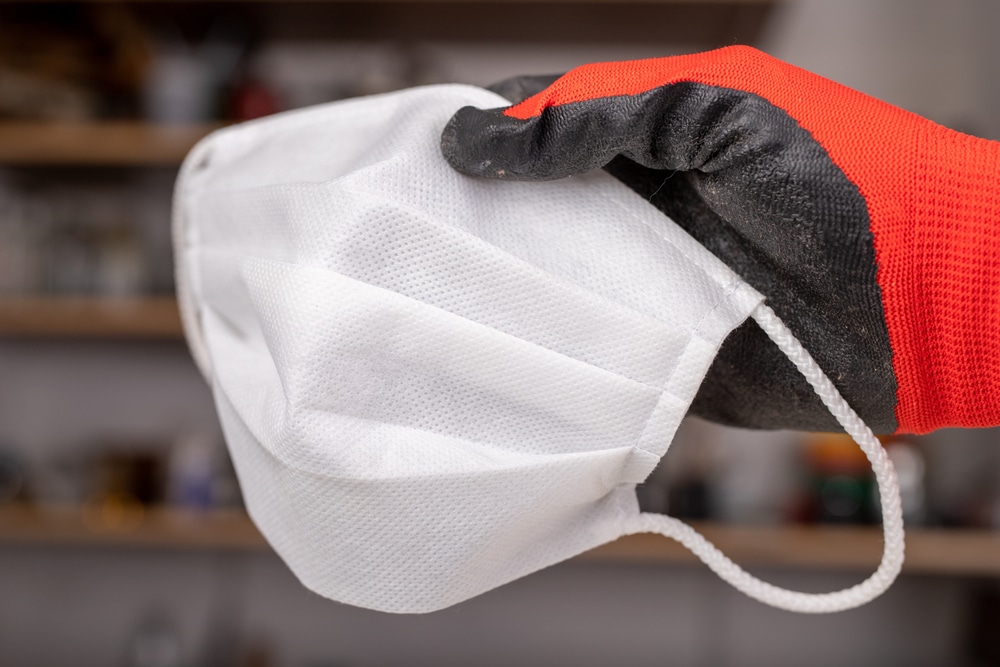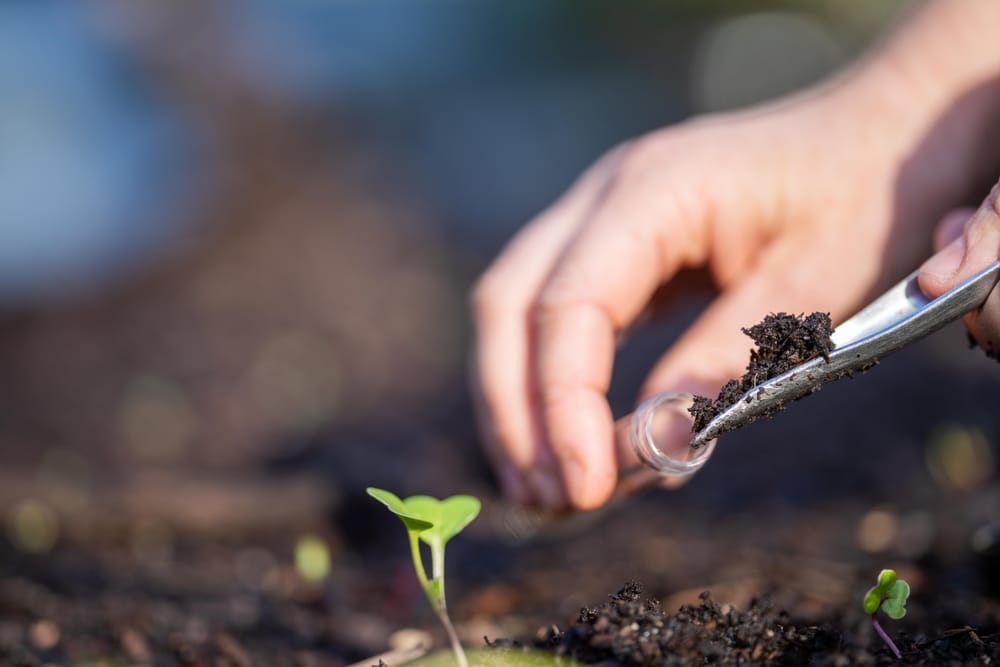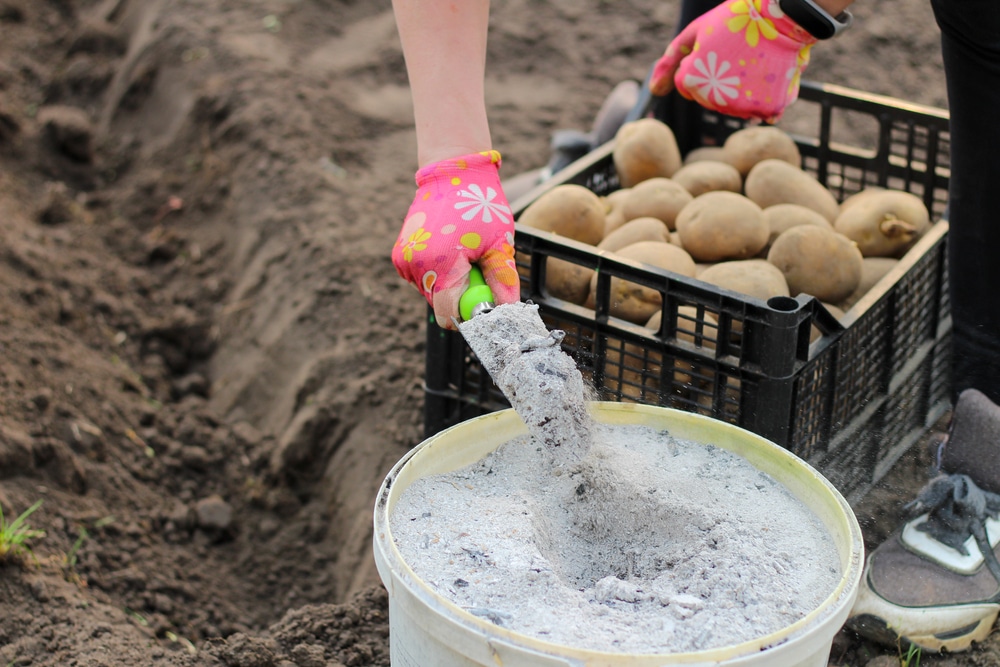Summary
While we don’t recommend using ashes in your garden as they have too many risks and better alternatives exist, there are steps you can take if you choose to do so anyway. The first is to take the proper safety precautions, including wearing long sleeves and pants, safety glasses, and a mask. Add them to your garden on a day with low wind when the soil is relatively dry. Do not mix them with nitrogen fertilizers or with water. Also, be aware that they will affect your soil’s pH level, so test your soil before adding them, and make sure you’re using untreated wood ashes. Mix the ashes into your soil, but don’t mix any more than 15 to 20 pounds per 1,000 square feet per year. Continue monitoring and testing your soil following the application.
Soil health is one of the foundational elements of gardening. How you take care of your soil makes or breaks your garden’s success.
Ashes (specifically untreated wood ashes) contain some compounds that may benefit plant growth. Still, there are a few important steps I suggest before you take your ashes into your garden.
1 – Take The Proper Safety Precautions

Wood ashes are highly alkaline (pH 10-12). This means they are quite reactive, so you’ll need to take the proper safety steps before handling them.
When mixed with water, for example, ashes become a liquid that may cause burns. As a precaution, you should wear pants, long sleeves, and some kind of eye covering when working with them.
You also don’t want to risk breathing ashes in. Due to their fine particle size, you may want to wear a mask while working with them.
If you choose to use them in your garden, it is best to work on a dry day with low wind at least four to six weeks before you intend to plant.
Lastly, ashes create ammonia gas when mixed with many nitrogen fertilizers. Please take care to avoid this, as it can cause harm to your respiratory system,
2 – Gather Information

Now that you will safely handle your ashes, it’s time to explore their usefulness in your garden.
There are three primary reasons people use ashes in their gardens:
- To change the pH of their soil from acidic to alkaline
- To add nutrients to the soil for their plants
- To dispose of the ashes in the least harmful way
To decide if your garden is a good place to put your ashes, you need to find out the pH level of your soil and get a reading of what nutrients it is carrying.
You can gather this information from a soil test.
Test Your Soil
To test the soil, you or a professional will gather and test some samples from your garden.
Your options range from picking up a do-it-yourself kit from a hardware or garden store to calling your municipality or a local university. Most tests are not usually costly, and sometimes they’re even free. Some private firms and laboratories also do this work.
If you purchase a DIY test, your results will be more general, but if you follow the directions, you will get the information you need to assess what amendments your soil (and plants) would most benefit from.
Bringing in a professional to test your soil gets you more detailed information, but it will take longer. Even when you gather the samples to be tested and drop them off at the lab, getting the results will take some time.
Unless you are very knowledgeable about soil, plants, or both, and can identify your garden’s needs through observation, I recommend testing your soil.
Determine What’s In Your Ashes
What’s in your ashes depends on what you burned to make them. Anything that helped start or fuel the fire remains in the ashes (though in a different form).
Ashes for your garden should come exclusively from burning untreated wood. With anything else, you’re either taking a risk or a gamble, and you don’t want to do either since ashes can affect your and your plants’ health.
Even if you oversee the fire management and ash distribution, burn the same kind of wood, and consistently measure the same markers, you would still see variability in the finished product and how it will affect your garden in a specific year. This is less of a concern than inadvertently introducing something you don’t want in your garden because you didn’t know what was burned.
Generally speaking, the chemical breakdown of wood ash is primarily calcium. It also includes potassium, phosphorus, magnesium, manganese, boron, iron, copper, etc. These are nutrients plants like and need in the correct ratios.
3 – Use Them In Your Garden

If you choose to use ashes in your garden, although I highly recommend you read the sections below before doing so, please follow the University of Wisconsin’s recommendation and don’t exceed approximately 15 to 20 pounds (approximately a 5-gallon bucket) per 1,000 square feet in a year.
Other recommendations:
- Be mindful of how this choice may impact the broader ecosystem, specifically freshwater sources. Check to see if your municipality has any laws around applying wood ash and proximity to waterways. Some municipalities do.
- Mix ashes into the soil instead of just applying on top.
- Observe your plants and continue testing your soil to watch for accumulations of nutrients or a potentially harmful rise in pH.
Why I Don’t Recommend Using Ashes In Your Garden
I work hard at building and maintaining the health of my soil. It’s a slow process that occurs over the course of years.
I do this because I know the soil ecosystem is both the sustenance and first line of defense for my plants and the overall health of my garden.
Given how much I value my soil, the risk I would take in applying a potentially harmful material like ashes does not make sense to me, especially when the benefit was only minor.
That said, I’ve also never had to amend soil that was too acidic.
Another potential risk of using wood ashes in your garden is how it affects the broader ecosystem. Wood ashes are very water-soluble. Once you apply them and it rains, those chemicals start making their way to our freshwater sources. If they accumulate in a significant number, they also begin to contaminate and disrupt those ecosystems.
Also, as previously mentioned, ashes are extremely alkaline and can powerfully react with other compounds. You need to keep yourself safe, but also your garden.
Most plants like to grow in soil that ranges from slightly acidic to neutral (pH 5.5-7). If soil is in that range, plants have access to all nutrients. When the pH is outside that range in either direction, plants react to the imbalance and inhibit a certain aspect of growth, which then cascades into multiple problems.
A typical example of such a problem is interveinal chlorosis. This is when soil pH rises outside of the optimal zone, and the nutrients in the soil bind to the soil instead of being available for plants. The leaves turn yellow and look the same as they would if the soil were lacking in nutrients when the problem is the soil is too alkaline.
What I Do With My Ashes
I bag the ashes our household creates and send them to the landfill. The municipal composting program will not accept them, and truthfully, I don’t want them in my compost, either. It’s not a perfect solution, but it’s the best one I have right now.
When It Might Make Sense To Use Your Ashes In Your Garden
If you need to raise the pH of your soil, I think wood ash is a decent choice. It is both readily available and works quicker than agricultural lime (which is the primary alternative).
If you are mostly seeking to boost the nutrients in your soil, there are several more effective and gentler ways to do so. Some of my favorites are using compost, mulching, using green manures, and more.
I think the best reason of all to apply wood ash to your garden in any amount is to manage disposing of them responsibly and sustainably. The potential nutrient benefit is secondary.


